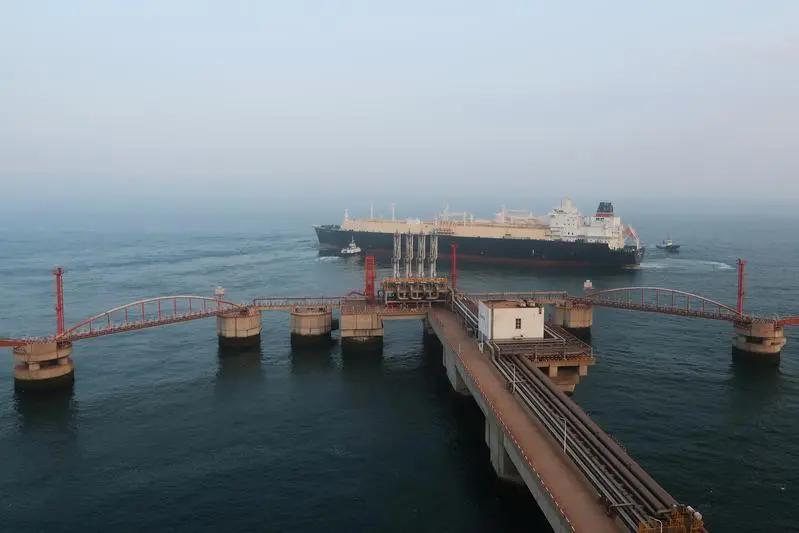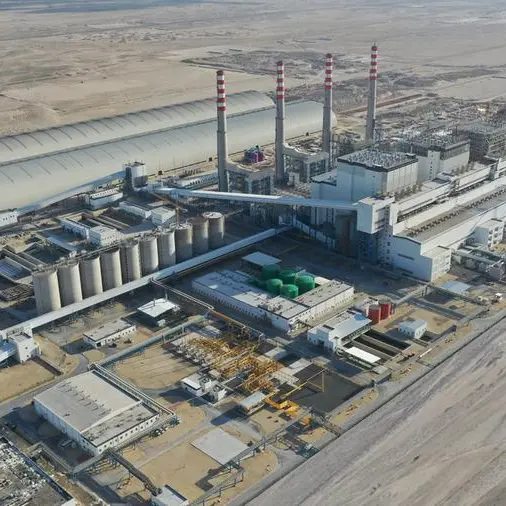PHOTO
SINGAPORE - As newly formed PipeChina starts opening access to China's gas infrastructure this month, a group of firms outside China's national energy champions are set to become significant importers of liquefied natural gas, giving a welcome boost to weak global energy demand. Below lists key facts of some of these players.
Beijing Gas Group
Terminals: Building a 5 million tonnes per year (tpy) terminal in Tianjin due for startup in 2022. It has a small stake in PetroChina-controlled Caofeidian terminal.
Market: Controlled by Beijing Enterprises Group Co, it's the near monopoly supplier in China's capital with gas sales of 16.6 billion cubic metres (bcm) in 2019, the world's second-largest market by city after Moscow. Operates a trading outfit in Singapore.
Shenergy Group
Terminals: Wholly owns the 1.5 million tpy Wuhaogou terminal and stake holder in the 3 million tpy Shanghai terminal in partnership with CNOOC in Shanghai.
Market: Supplies over 90% of gas use to China's financial hub Shanghai, including over 7 million residential users, with 2019 sales at 9.8 bcm.
Zhejiang Energy Group Co Ltd
Terminals: Owns a stake in CNOOC-controlled Ningbo LNG and has a 51% share in Wenzhou LNG terminal with Sinopec Corp which is due for start-up in 2021. Plans to build another terminal in Zhoushan.
Market: Dominant thermal power generator and natural gas supplier in Zhejiang province. It sold 11.8 bcm gas in 2019, over 80% of the province's total. Set up a joint venture with Glencore in 2018 to trade oil and gas, and brought in first spot LNG cargo into Zhoushan this month.
ENN Energy Holdings
Terminals: To expand 3 million tpy terminal in Zhoushan to 5 million tpy in first half of 2021.
Market: The terminal is connected to the Zhejiang provincial grid that has a capacity to carry 8 bcm of gas a year.
ENN, operator of China's first privately controlled receiving terminal in Zhoushan, has three LNG sale and purchase agreements with Chevron Corp , Total , and Origin Energy , with total volume of 1.43 million tpy.
Zhenhua Oil
Subsidiary of state defense giant Norinco, company started gas unit in June 2018 to invest in LNG terminal and trade the fuel. In September 2018, it became one of China's first companies outside national majors to win access to a south China terminal in an auction
Guangdong Energy Group Co., Ltd
Terminals: Building its first terminal in Yangjiang, Guangdong province, which is slated for start-up in 2023 or 2024.
Market: Supplies to about 14 gigawatt of gas-fired power plants in Guangdong, China's No.2 gas market by province, that requires an estimated five to six million tpy of LNG by the gas power plants.
Previously known as Yudean Group, the company is 76% owned by Guangdong government with the rest owned by state utility Huaneng Group.
Its LNG purchaser Guangdong Energy Natural Gas Co Ltd has bought 11 shipments this year, up from four last year.
Guangzhou Gas
Terminal: As stake holder in CNOOC-controlled Dapeng terminal, won first slots to import LNG in 2019.
The city gas distributor won access to CNOOC's Zhuhai Jinwai terminal earlier in 2020, resulting in a surge in total imports this year to 13 shipments versus five last year.
Its own terminal at Nansha of Guangzhou is due for start-up in August 2022.
JOVO Energy
Terminal: Operates a berth in Dongguan with LNG receiving capacity of 1.5 million tpy
Market: JOVO, China's first private firm to import LNG in 2013, operates 20 LNG and CNG (compressed natural gas) filling stations in South China.
It was also the first private firm to secure a term LNG deal in April 2014 with a 300,000 tpy purchase agreement with Petronas, according to IHS Markit.
Shenzhen Gas
Terminals: Operates a 800,000 tpy terminal in Yantian port of Shenzhen via its unit Sino-Benny and owns a small stake in CNOOC-led Dapeng LNG terminal
Market: The Shenzhen government-backed fuel distributor supplies 3.8 million city gas users with 2019 gas sales at 3.1 bcm.
Pacific Oil and Gas
Terminals: A unit of Indonesia's RGE Group, the firm owns a 35% stake in PetroChina-controlled Rudong terminal in Jiangsu province.
It is planning 3 mln-tpy terminal in Yangjiang, Guangdong, in a 50-50 joint venture with Guangdong Energy Group.
Its affiliate Woodfibre LNG is building an LNG export terminal in Canada.
Market: Owns several gas-fuelled power plants Xiamen and Wuxi.
China Gas Holdings and Huadian Group
One of China's largest private city gas distributors, China Gas is aiming to set up an overseas LNG trading arm in 2021, also in advanced discussions to invest one or two receiving terminals in Shandong province, said a company executive.
Huadian has the largest fleet of operating gas-fired power plants in the country, at 15GW by end-2018, which could grow to 19GW and 30GW in 2020 and 2030, respectively, according to IHS Markit.
GCL Oil& Natural Gas Co Ltd
A subsidiary of private energy and power firm GCL (Group) Holding, plans three receiving terminals - Yantai in Shandong province, Rudong in Jiangsu and Maoming in Guangdong - with a total annual handling capacity of 14.5 million tonnes.
In April it entered a framework agreement with Royal Dutch Shell to explore setting up an east China-based joint venture to market and trade LNG.
Sources: Company executives and reports, IHS Markit
( Editing by Florence Tan and Kim Coghill) ((aizhu.chen@thomsonreuters.com; +65 6870 3284; Reuters Messaging: aizhu.chen.reuters.com@reuters.net))












